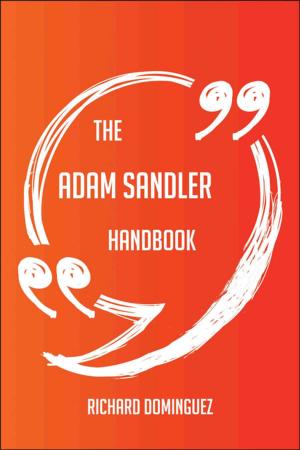| Author: | Gary Gonzales | ISBN: | 9781486430314 |
| Publisher: | Emereo Publishing | Publication: | October 24, 2012 |
| Imprint: | Emereo Publishing | Language: | English |
| Author: | Gary Gonzales |
| ISBN: | 9781486430314 |
| Publisher: | Emereo Publishing |
| Publication: | October 24, 2012 |
| Imprint: | Emereo Publishing |
| Language: | English |
Here's part of the content - you would like to know it all? Delve into this book today!..... : Three-dimensional imagery is perceived due to persistence of vision, in that a collection of voxels is projected at different locations within the volume over a time period such as 1/30 sec; they are visually integrated into one reconstructed 3-D scene.
...For example, a standard 24 bits per pixel, 1024×768 resolution, flat/2D display requires about 135 MB/s to be sent to the display hardware to sustain 60 frames per second, whereas a 24 bits per voxel, 1024×768×1024 (1024 pixel layers in the Z axis) volumetric display would need to send about three orders of magnitude more (135 GB/s) to the display hardware to sustain 60 volumes per second. As with regular 2-D video, one could reduce the bandwidth needed by simply sending fewer volumes per second and letting the display hardware repeat frames in the interim, or by sending only enough data to affect those areas of the display that need to be updated, as is the case in modern lossy-compression video formats such as MPEG. Furthermore, a 3-D volumetric display would require two to three orders of magnitude more CPU and/or GPU power beyond that necessary for 2-D imagery of equivalent quality, due at least in part to the sheer amount of data that must be created and sent to the display hardware.
There is absolutely nothing that isn't thoroughly covered in the book. It is straightforward, and does an excellent job of explaining all about Volumetric display in key topics and material. There is no reason to invest in any other materials to learn about Volumetric display. You'll understand it all.
Inside the Guide: Volumetric display, Voxel, Stereoscopy, Stereoscopic Displays and Applications, Stereo display, Multiscopy, Holography, Holographic display, Holodeck, Heliodisplay, Fog display, Display device, Autostereoscopy, Anaglyph 3D, 3D television, 3D film
Here's part of the content - you would like to know it all? Delve into this book today!..... : Three-dimensional imagery is perceived due to persistence of vision, in that a collection of voxels is projected at different locations within the volume over a time period such as 1/30 sec; they are visually integrated into one reconstructed 3-D scene.
...For example, a standard 24 bits per pixel, 1024×768 resolution, flat/2D display requires about 135 MB/s to be sent to the display hardware to sustain 60 frames per second, whereas a 24 bits per voxel, 1024×768×1024 (1024 pixel layers in the Z axis) volumetric display would need to send about three orders of magnitude more (135 GB/s) to the display hardware to sustain 60 volumes per second. As with regular 2-D video, one could reduce the bandwidth needed by simply sending fewer volumes per second and letting the display hardware repeat frames in the interim, or by sending only enough data to affect those areas of the display that need to be updated, as is the case in modern lossy-compression video formats such as MPEG. Furthermore, a 3-D volumetric display would require two to three orders of magnitude more CPU and/or GPU power beyond that necessary for 2-D imagery of equivalent quality, due at least in part to the sheer amount of data that must be created and sent to the display hardware.
There is absolutely nothing that isn't thoroughly covered in the book. It is straightforward, and does an excellent job of explaining all about Volumetric display in key topics and material. There is no reason to invest in any other materials to learn about Volumetric display. You'll understand it all.
Inside the Guide: Volumetric display, Voxel, Stereoscopy, Stereoscopic Displays and Applications, Stereo display, Multiscopy, Holography, Holographic display, Holodeck, Heliodisplay, Fog display, Display device, Autostereoscopy, Anaglyph 3D, 3D television, 3D film















